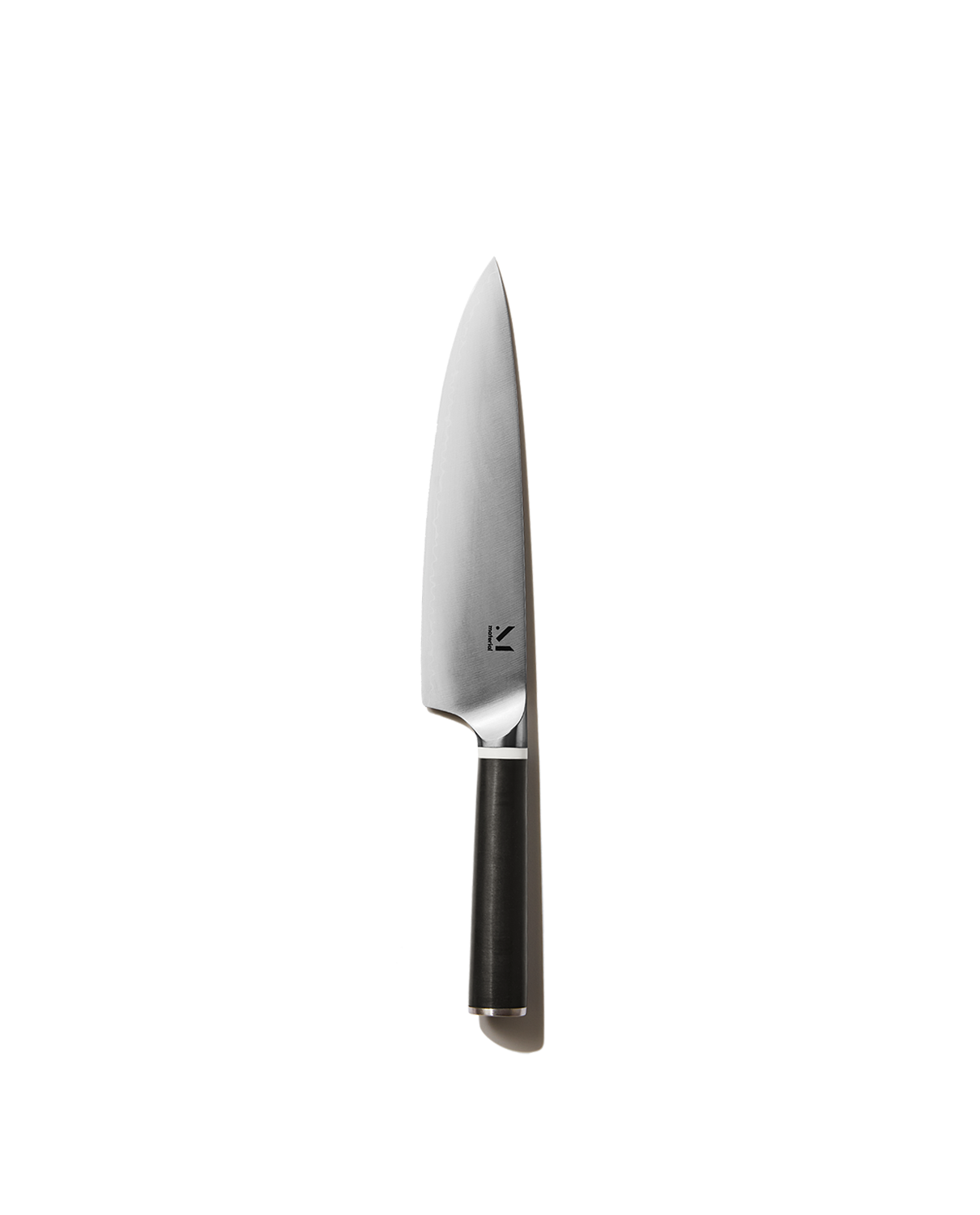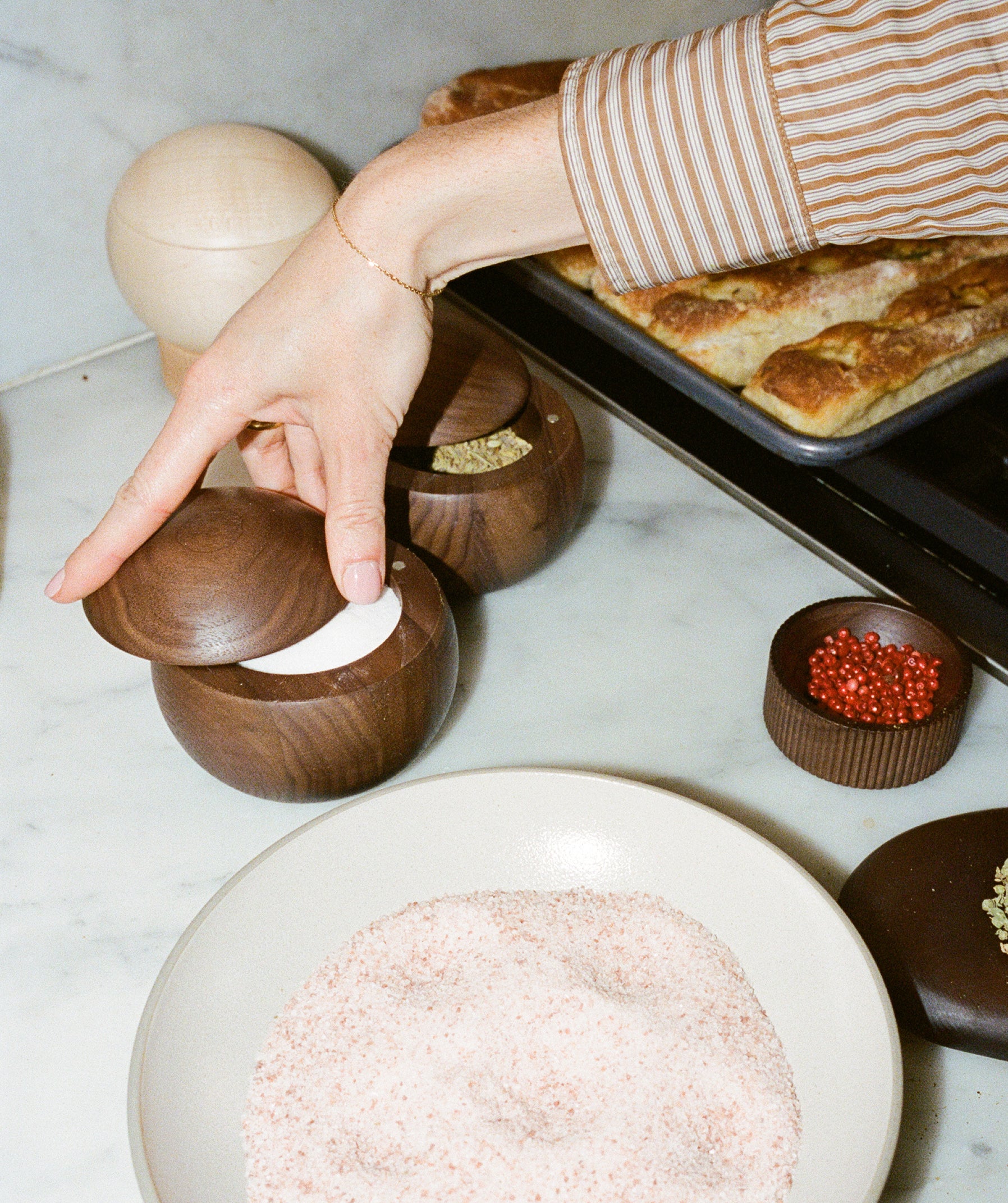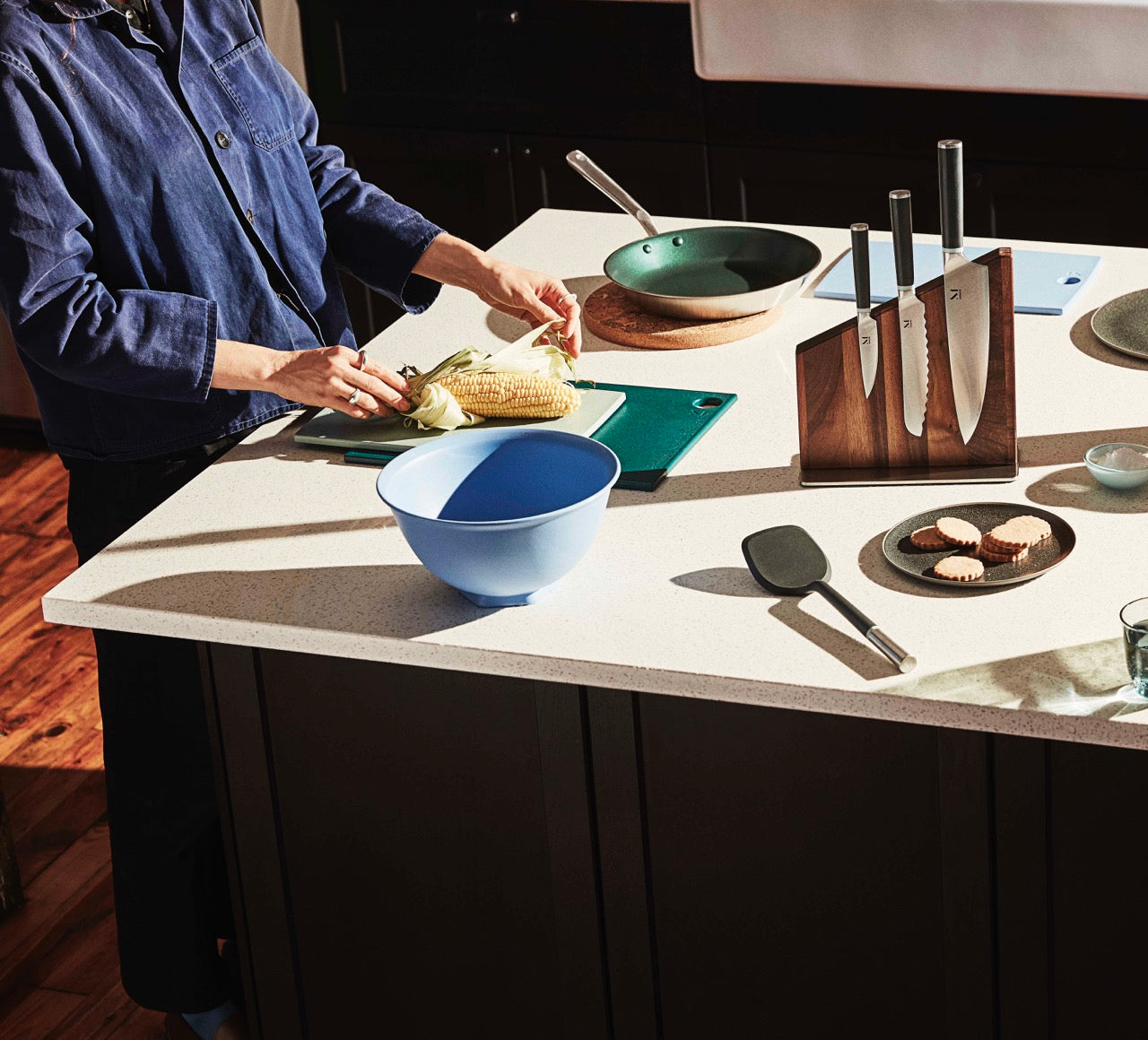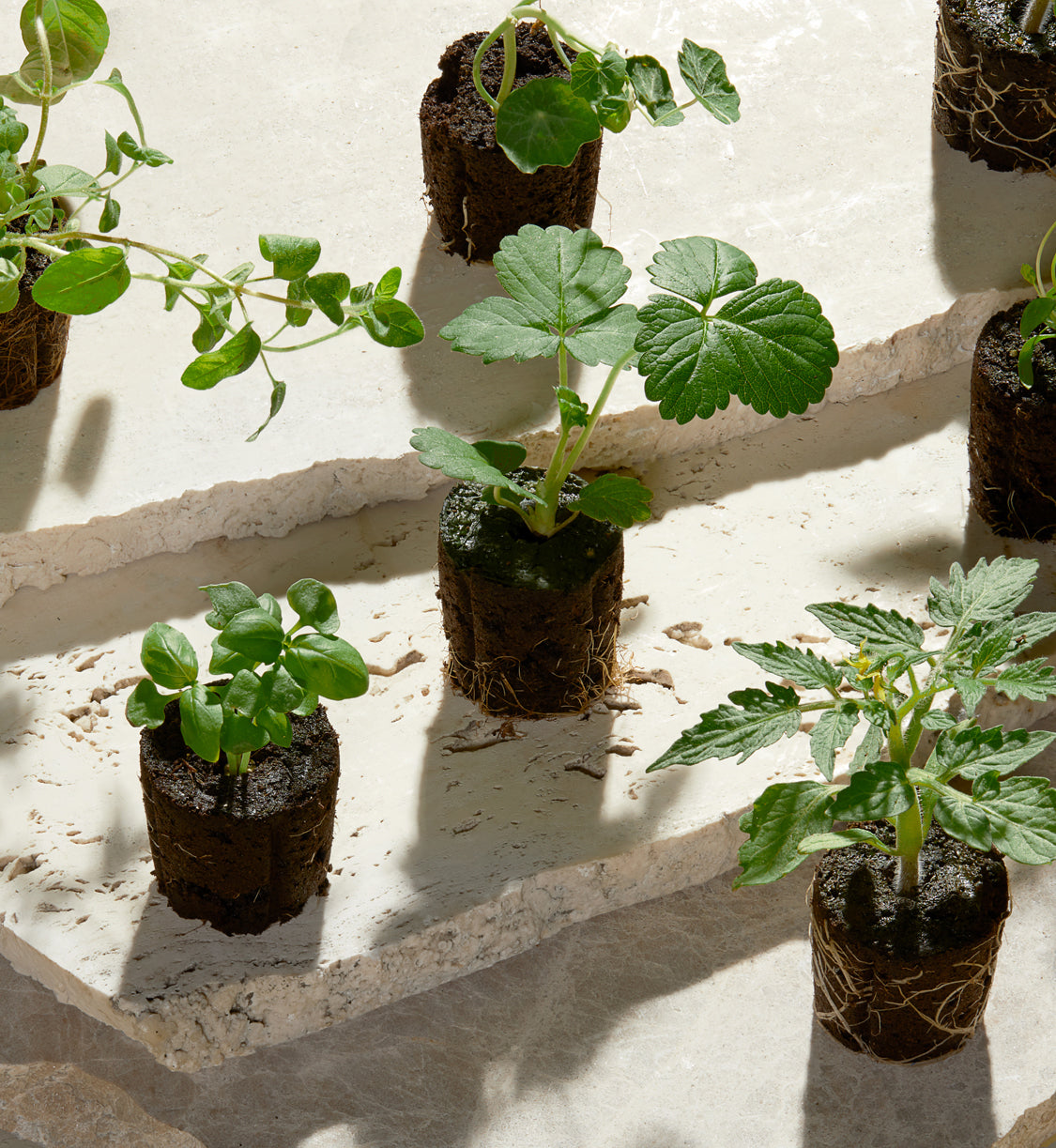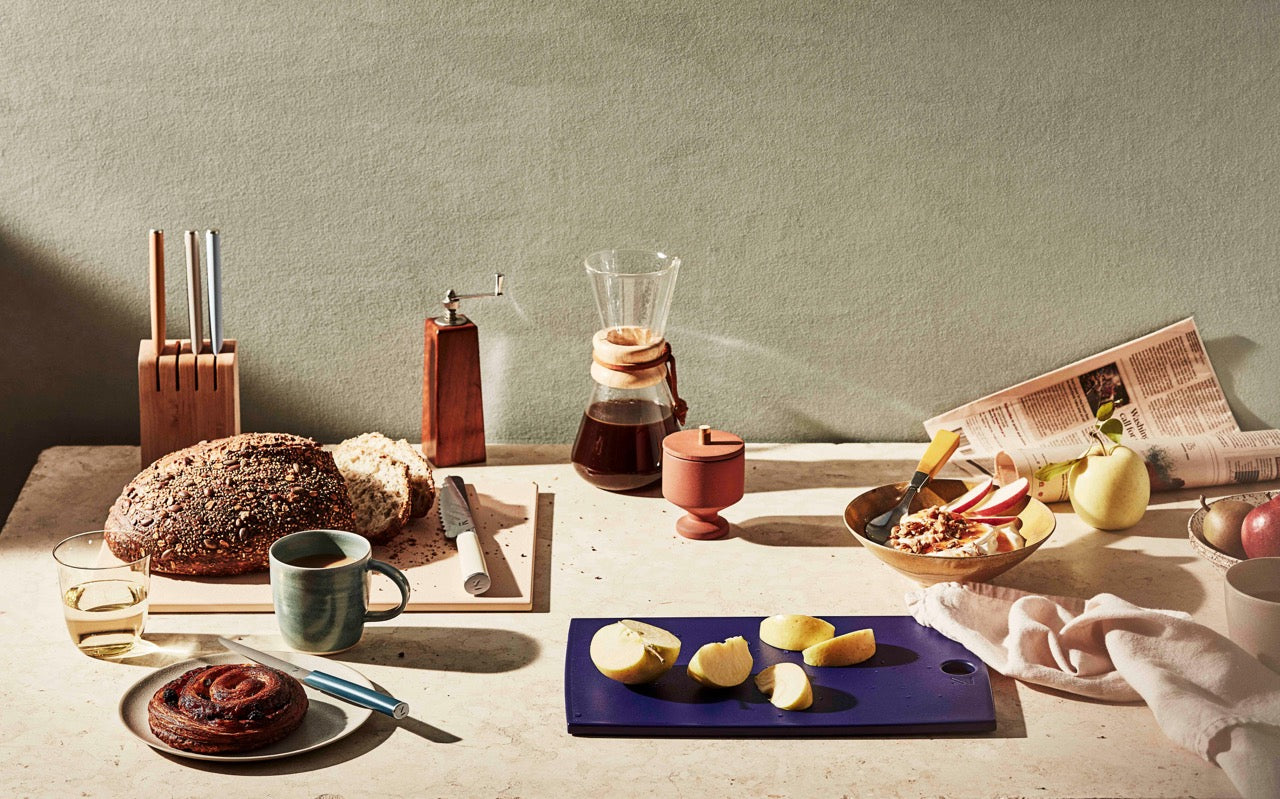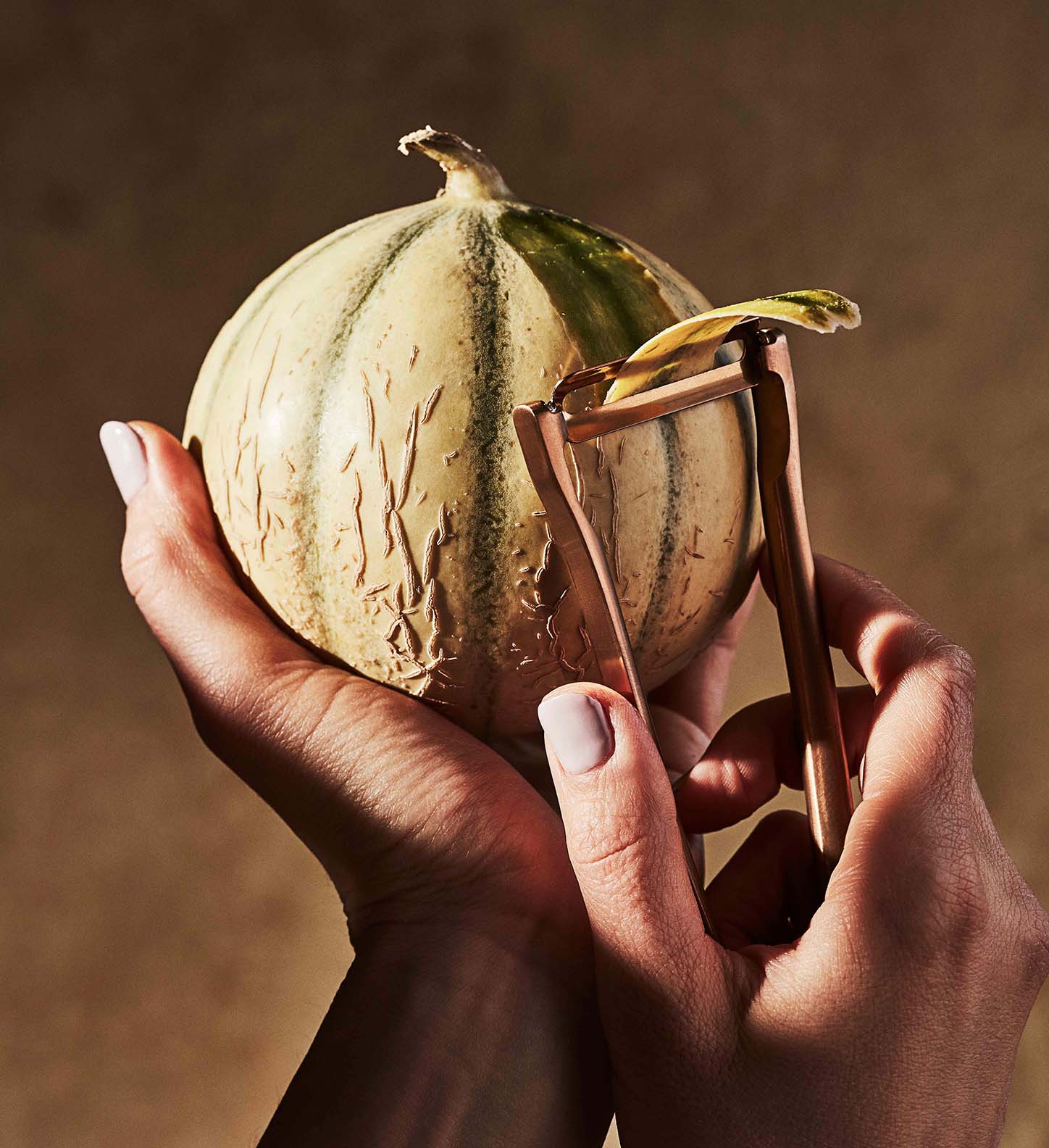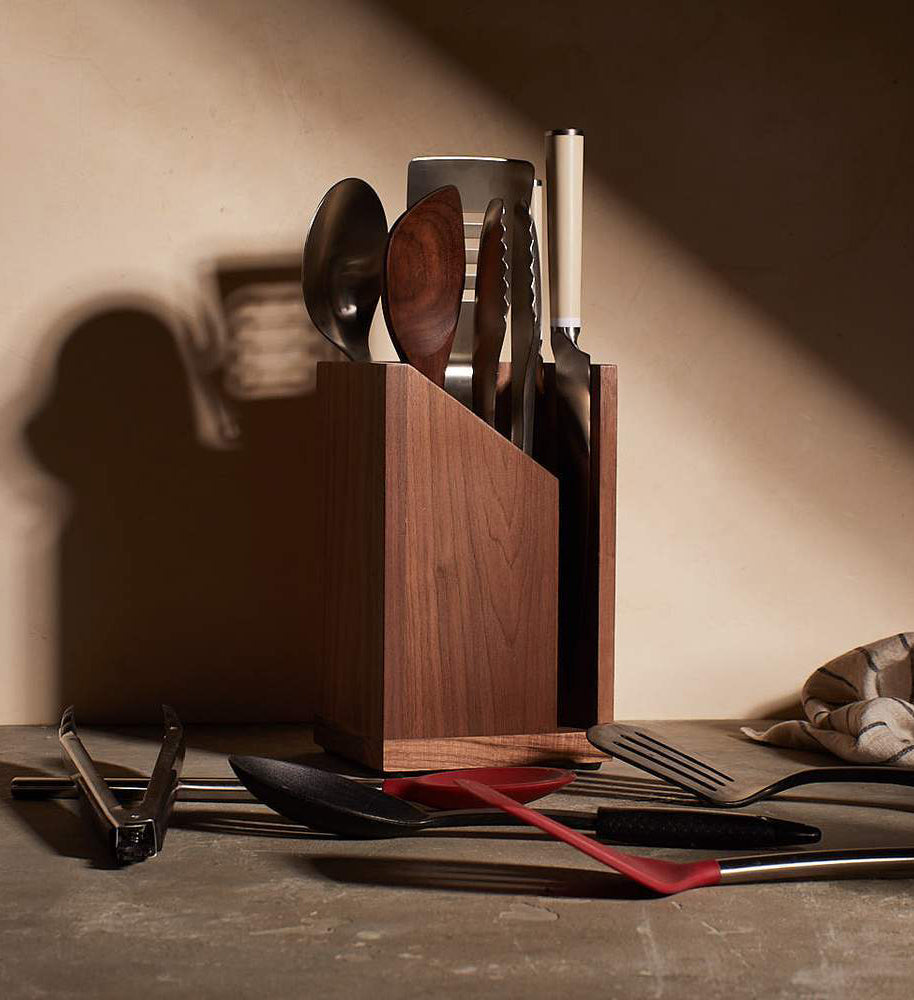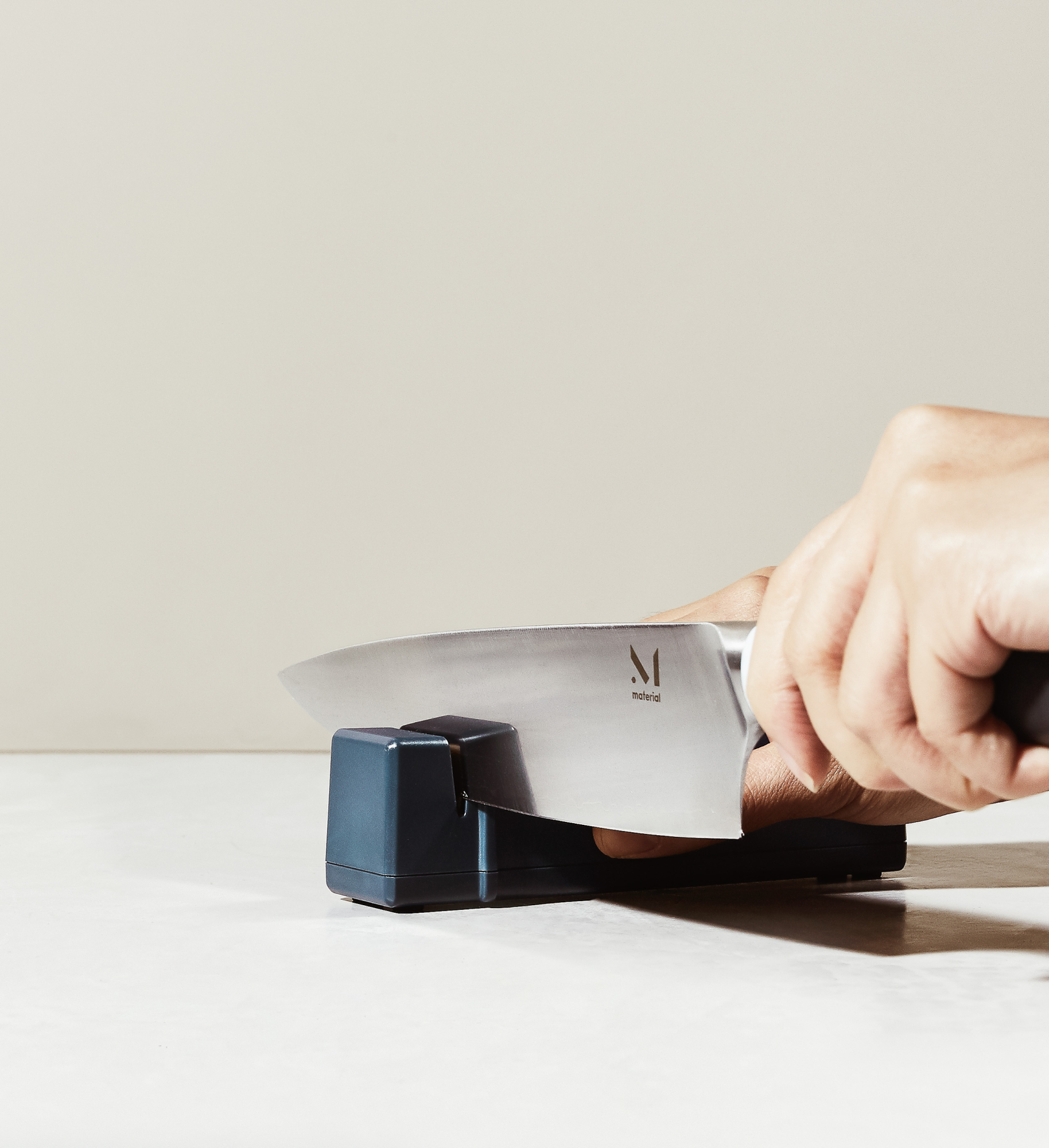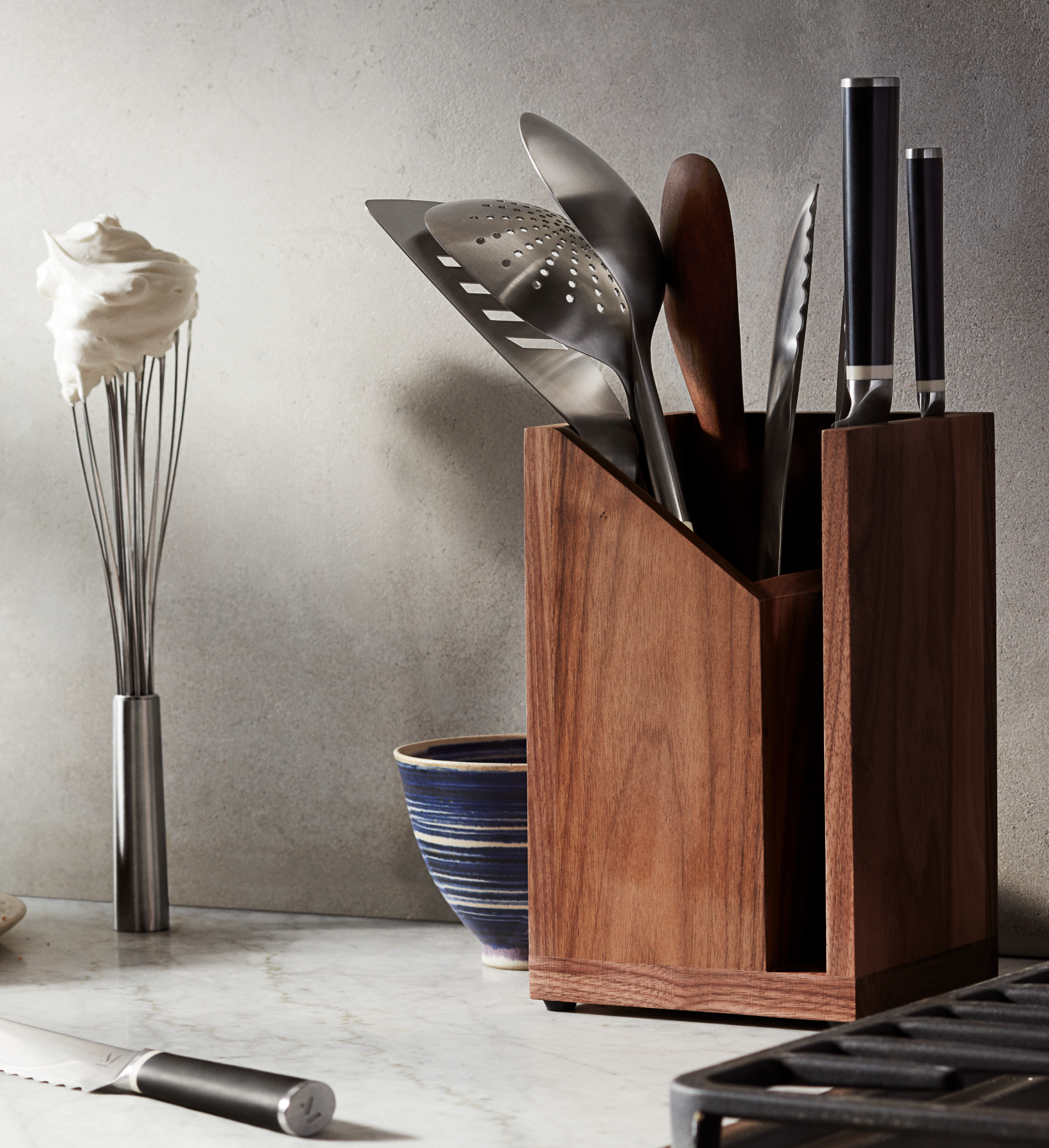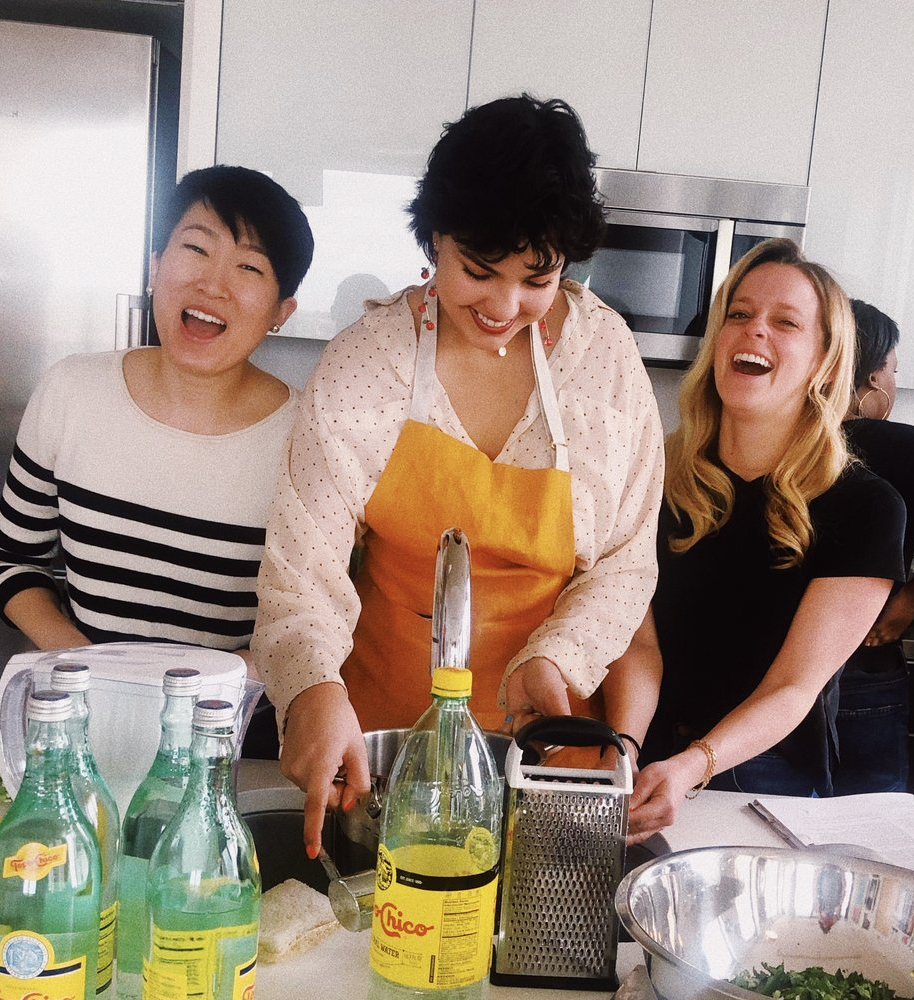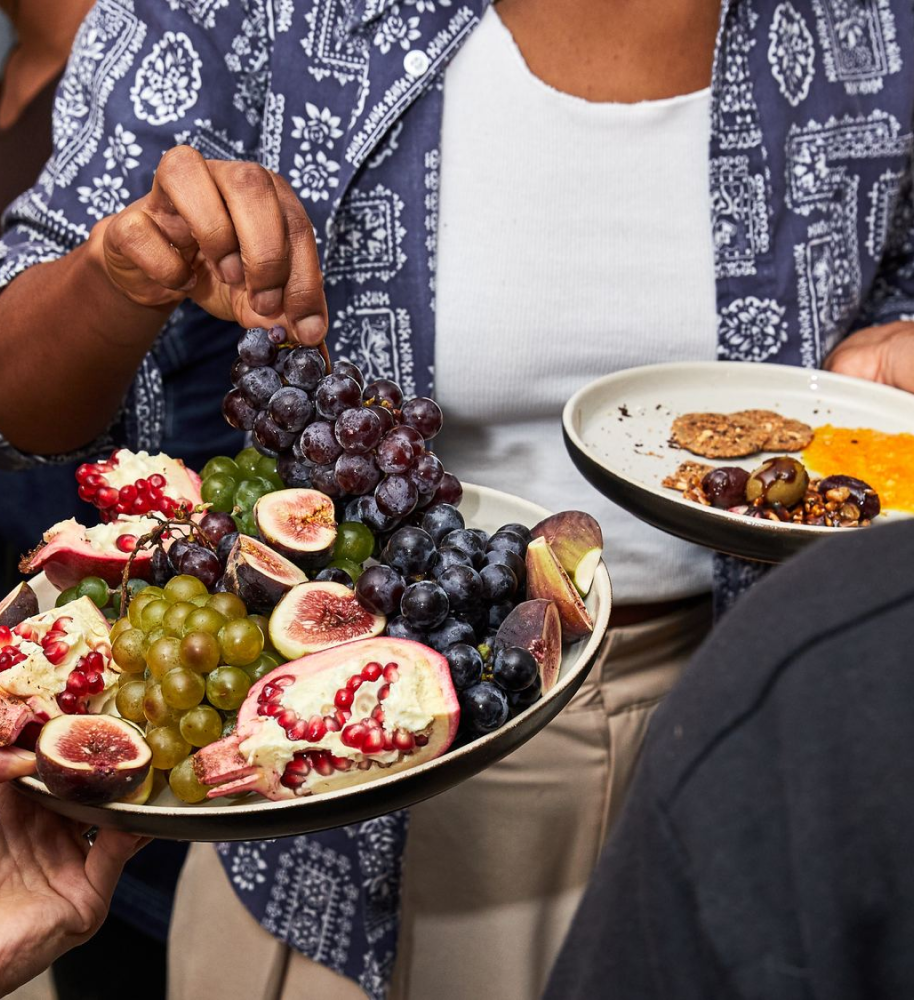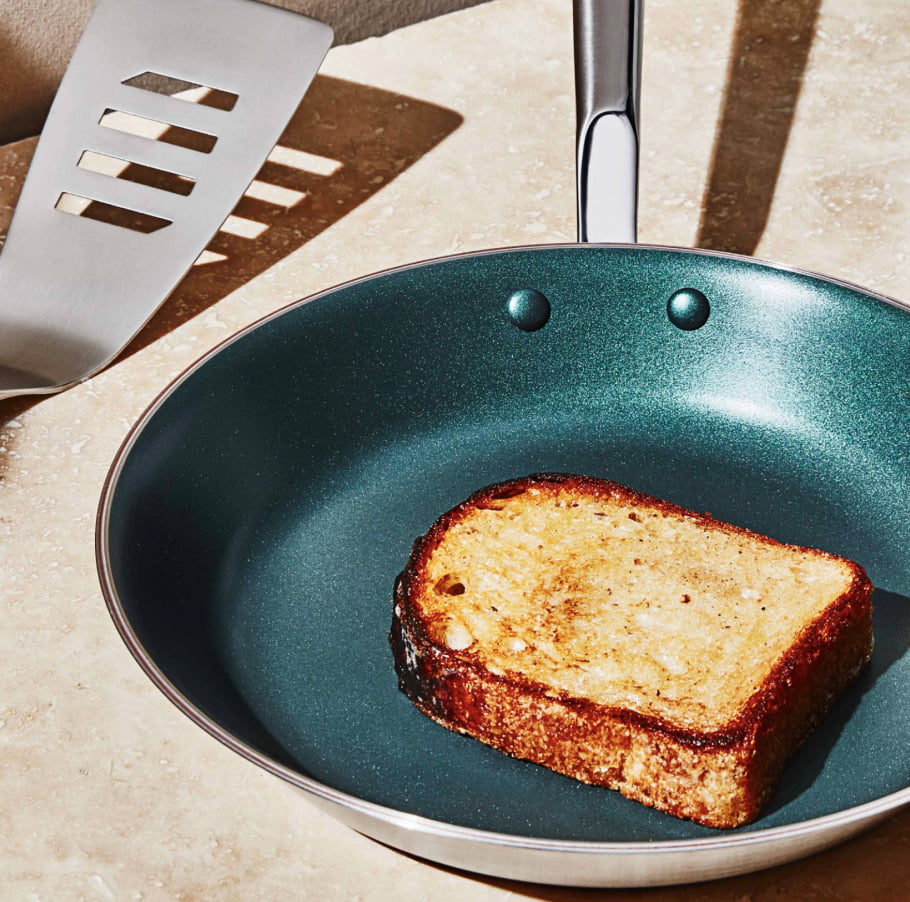If cooking the perfect Thanksgiving turkey has always felt a little daunting, you’re not alone. To help ease the pressure and ensure your turkey turns out just right, follow these tips from MEATER chef Dylan Werth. Below, he shares his expert advice on everything from checking doneness to recommended cook methods (and what to do if your turkey turns out a little drier than expected). Plus, don't forget to check out the custom 8" Knife we created in collaboration with MEATER for precision cutting and effortless carving.
What temperatures should I keep in mind for cooking a chicken, turkey, porchetta or beef?
Although the MEATER app offers the recommended temperature for the selected proteins, here is a good rule of thumb! For Poultry, especially Chicken and Turkey, 165°F (75°C) is the target internal temperature. Here it is fully cooked but still retains perfect moisture and ensures the flavors are best at work. For Porchetta, it’s recommended to cook it at 325° F for a lengthly time to ensure the skin dries out to become extra crispy. With Beef, it can be selective depending on what you’d prefer but our recommendation is 135°F for internal temperature. This is Medium Rare and is the perfect way to enjoy the flavors of beef! For pull apart temperatures, such as making a stew or shredded beef, you want to aim for 205°F.

Other than temperature, are there any indicators of done-ness that I should look out for?
Areas I would pay attention to, is even cooking throughout the protein. Even if the temperature reads well in the area it’s at, if the protein is cooked unevenly it’s hard to ensure that the inside is cooked evenly and can be unreliable.
Help! I’m cooking for a crowd but a little bit nervous about cooking meat for so many people. What would you start with? Any tips for success?
It’s okay to be nervous! Just don’t let it stop you from how much fun cooking can really be. A good starting dish is a good ol’ fashion prime rib roast. You can get it with the bones removed and using your MEATER probes, the whole process becomes very easy! For your first time stick to the classic seasonings: flaky salt, crushed pepper, garlic powder and olive oil. Be sure to twine it so it retains its shape (this will make it easier when it comes to slicing and helps to ensure it is cooked evenly). Place it in a baking dish with plenty of oil. Add some garlic cloves and fresh rosemary and roast it at 375°F (190°C) until the internal temperature reaches between 135°F and 140°F (57°C and 60°C). Enjoy the roast and the compliments!


OK, I’ve committed to turkey for Thanksgiving. What’s the best way to cook it so that the white meat and dark meat are done at the same time? And do I really need to brine?
A great way to ensure equal cooking is to spatchcock or bullfrog it, this ensures they both have an equal top and bottom exposure to the heat. Brine is not entirely necessary but extremely encouraged. Turkey can absorb a lot of flavors in just a night of brining and when your brine has a decent amount of acidity (such as from lemons and oranges) it ensures the meat becomes flawlessly tender. Give this a try and then get used to handling the turkey every year after!
I overcooked the meat and it’s dry. Anything I can do to rescue the dish?
Oh dear! Very sorry to hear that, but hey mistakes happen! To add more moisture, you can slowly incorporate stock of the same meat gently by pouring it over in small amounts and returning it briefly to a low heat in the oven. You can also incorporate butter or olive oil in a similar manner, using a pastry brush to ensure even coating. The gentler you are with this process, the easier it is for the liquid to fall into the grains of the meat, so take the time for the repairing process! You can also consider serving your dish with a liquid accompaniment, be it either a sauce or gravy, or a runny chimichurri, but you can also make a compound, herbed butter and serve it on the meat dish!

